Last Monday morning (Sept 14) was our coldest morning of the fall, so I thought it would be a great morning to drive over at sunrise to Cataloochee Valley in the Great Smoky Mountains National Park for some elk viewing. September and October are rut season for the Elk, so the bulls are busy gathering and defending their cows.
The large bull pictured above was the dominant male that I saw that morning. He had a impressive harem of cows and none of the other males were within his sight. The bugling is to attract cows and to advertise his dominance to the other bulls. The sound is much higher pitched than you would expect from such a large animal.
He shepherded his herd across the road at one point, proving that even elk think the grass is greener on the other side.
During the crossing, the bull positioned himself so that he could monitor the photographers and protect his cows. For the safety of the elk and the photographers, photographers are required to remain at least 150 feet away from the elk. Beyond the distance rule, humans are not allowed to disturb the elk in any way. During certain times of year (rutting season and calving season), humans are also required to stay on the road and out of the fields. For these reasons, a good zoom lens is an absolute requirement to be able to get photographs like these that are close up, but we are actually a good distance away.
Did see one calf in the Herd. The calf always remained in the center of the herd and was well protected from any potential threats. The first picture was just as they were preparing the cross the road and the cows were forming a circle around the calf. Once across, the calf sought out breakfast.
As the sun rose higher in the sky, the elk settled down in a field with the bull carefully watching his herd.

In the lower left, you can see the biggest bull of the morning watching his cows sprawled under the tree.
Further down the road, I found three males – two obviously very young – who had attracted no cows. They were play fighting – preparing for a future year when they would be bigger, stronger, and more able to build their own herd. The third bull was obviously older and stronger, but not strong enough yet to challenge the bigger bull elks with herds.
In the last of these pictures, note that you can clearly see that one of the elk has a broken antler. The elk shed their antlers every year, so he will have new antlers next fall.

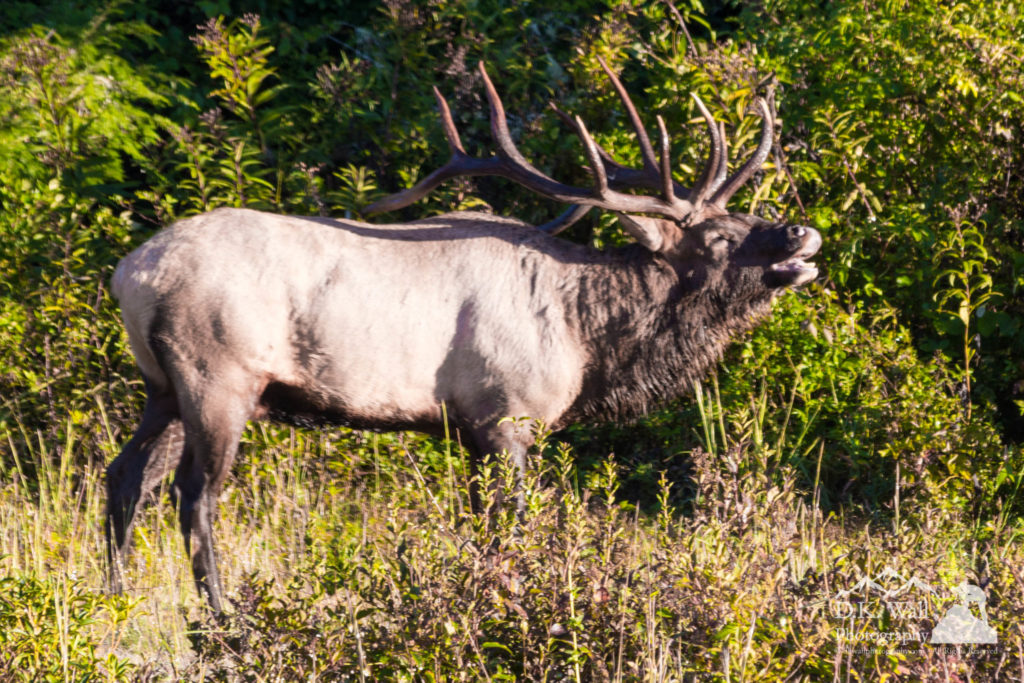
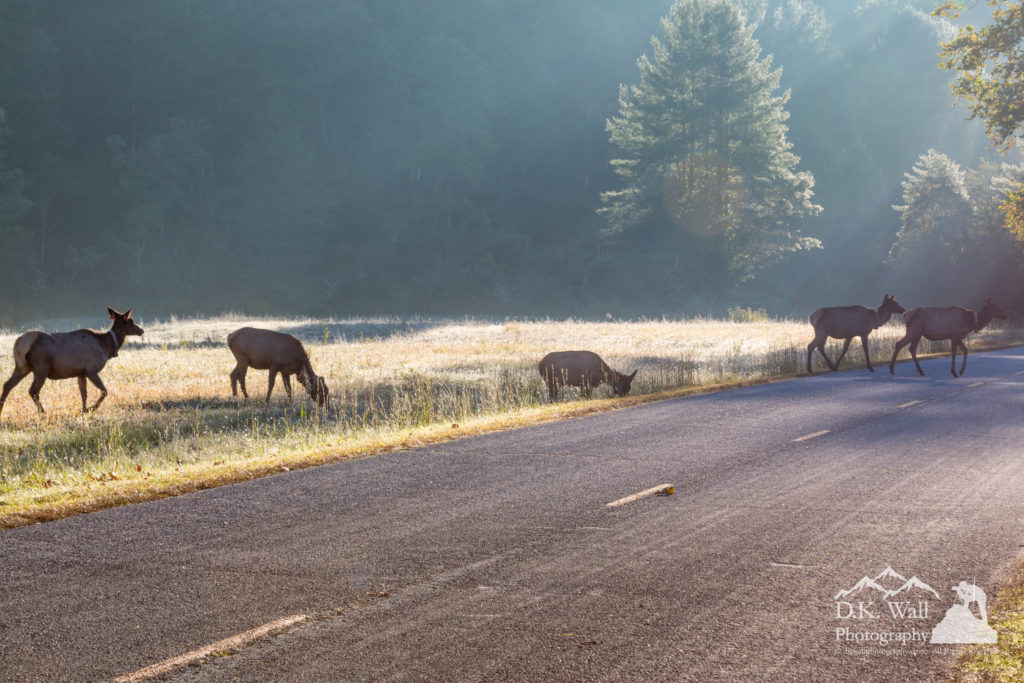
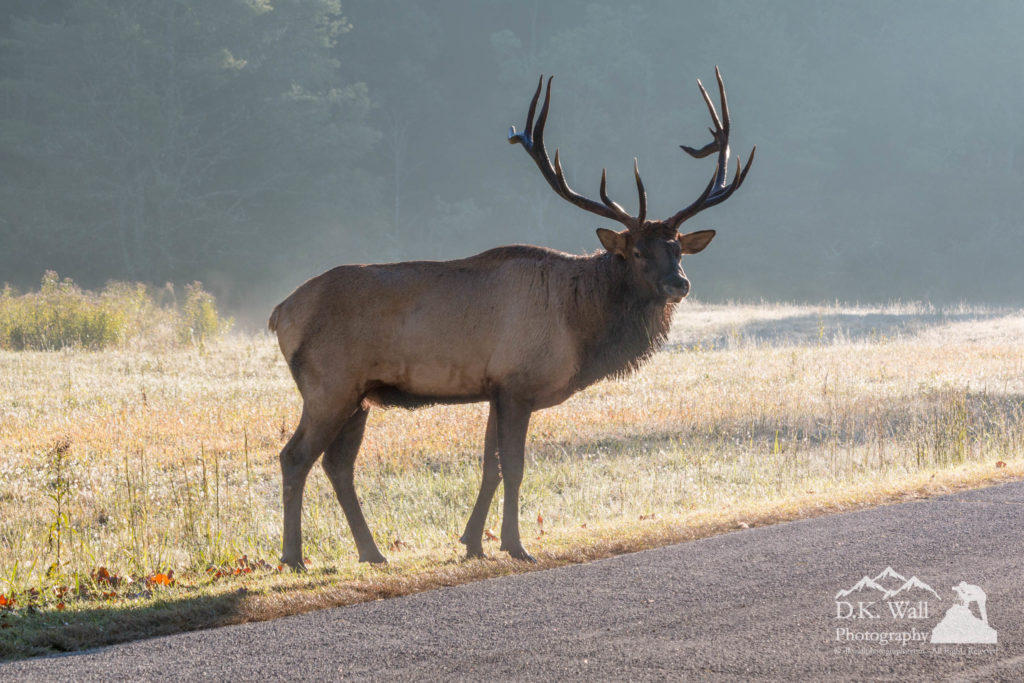
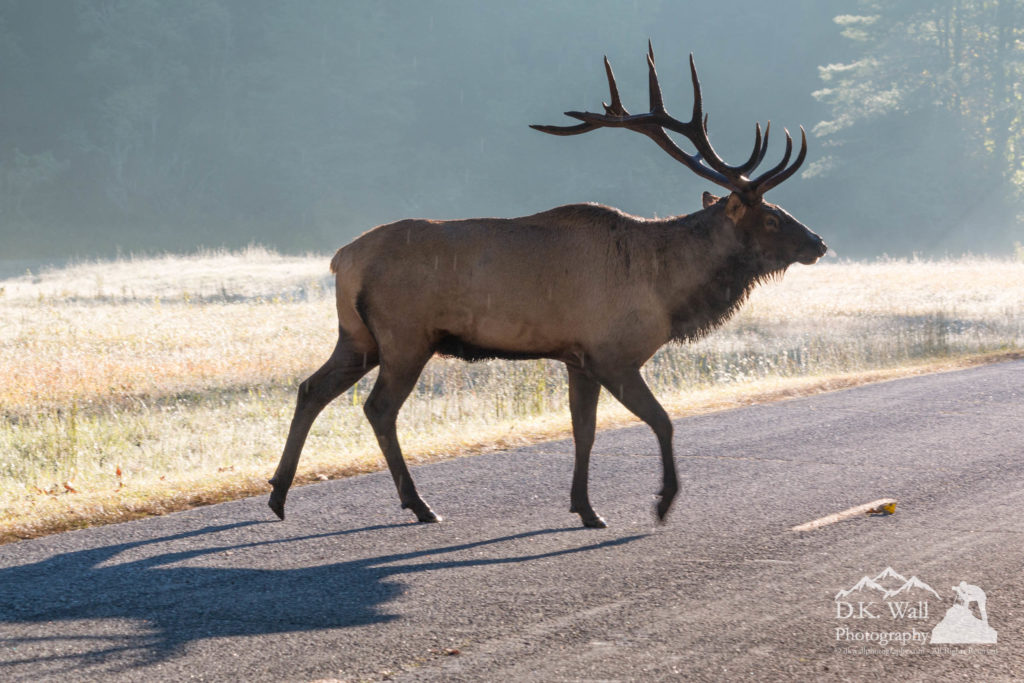
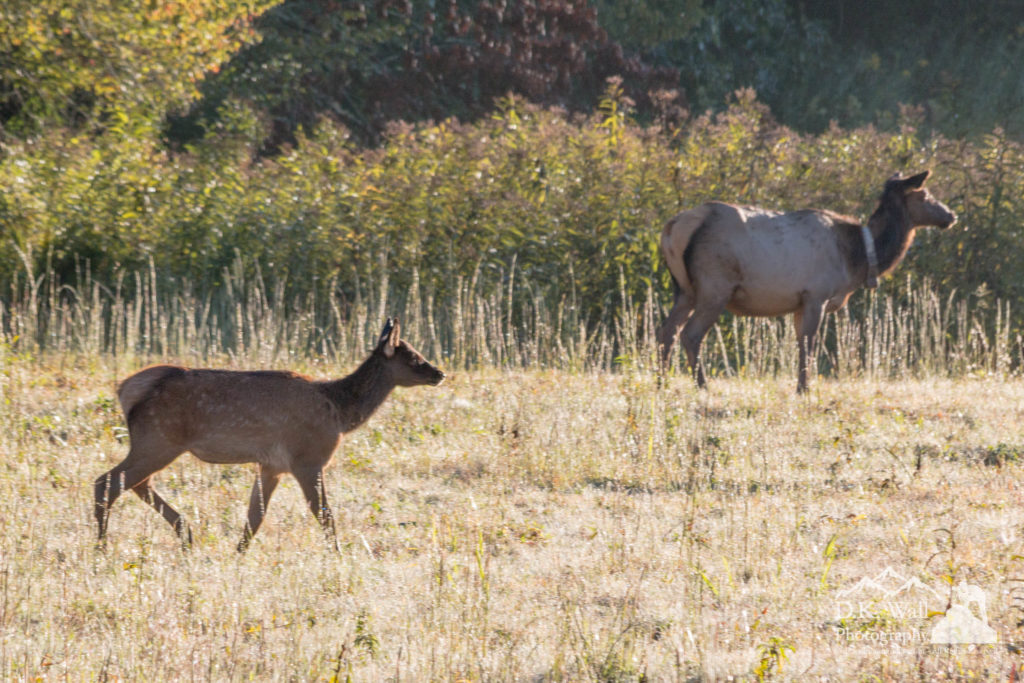

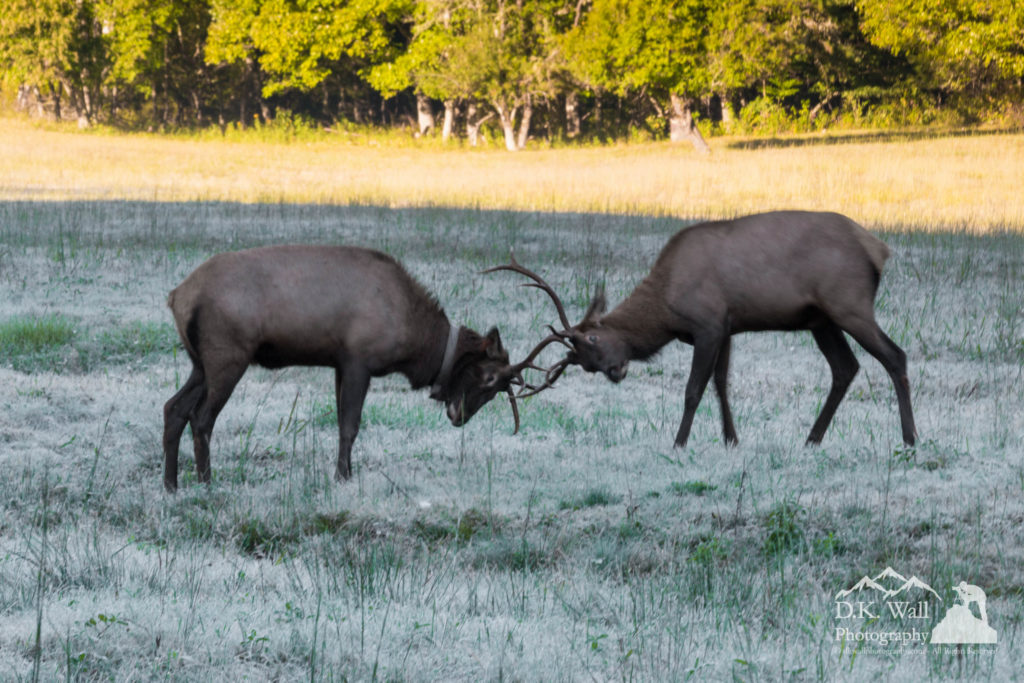
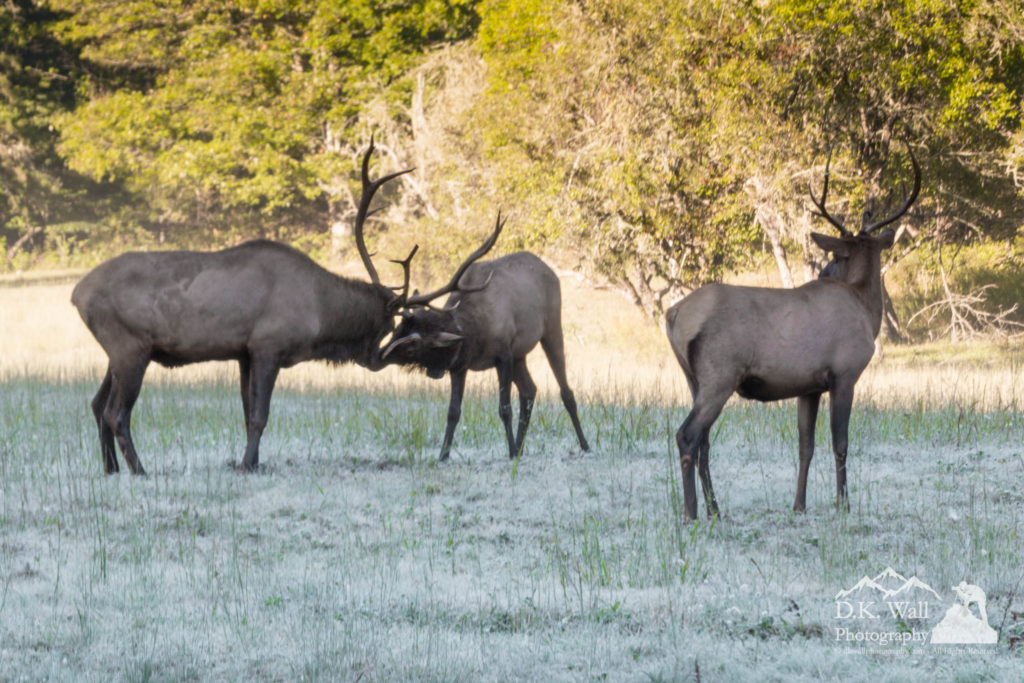

Oh such amazing pictures. It is just gorgeous where you live.
Pictures are amazing! The elk are so beautiful, starting next year they will be reintroduced into West Virginia, but I think down south, near the KY line (we are mid/eastern state).
Looking forward to more of your pictures. I trained in photography at the Willoughby Fine Arts School back in 1975/76/77. I love it, but do not have my equipment any more. Are you using all digital? I used film cameras and had a dark room to print in!
Best wishes,
Donna
Thank you. Yes, all digital processed in Lightroom.
It looks like one of the young bulls was wearing a collar – are their movements monitored?
Yes, the elk are tracked and studied.